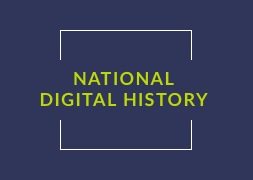Share:

Historical science in Kazakhstan that existed for decades was guided by class approach to the analysis and evaluation of historical events, during the totalitarian system under strict control of the party’s ideology. Huge layers of history of the Kazakh people studied selectively idealized process of accession of Kazakhstan to Russia, denied the concept of its colonial status. Nihilistic attitude manifested in cultural and historical heritage of Kazakhs peculiarities of historical development, ethno-genesis, interaction and mutual influence of nomadic and settled civilization. School course of Russian history was intended to illustrate the achievements of socialist construction, and therefore outside history were active participants in the liberation movement, representatives of Kazakh intellectuals were repressed in the 20-50 years of the last century.
The role of the textbook in the learning process has fundamentally changed. The rejection of its exclusive as an authoritative source of information has led to educational book that primarily helps to involve student to research methods of work: teaching historiographical analysis, bibliographic search and source criticism. Reference is mandatory element in the today’s textbook. Its purpose is significantly different from what he had in textbooks of past generations. Then the source cited at the end of this section as an illustration of the author's text, or, at best, as an argument in its favor. In the analyzed textbook question of historical sources resolved successfully, students can work independently with the text, to compare different evaluation and critically perceive the author's position. New content is supported by educational material methodical mechanism textbook. System of questions and tasks, putting it into the unit self-consciously helps to study historical processes, to learn to work with historical information to be able to not only answer questions, but also ask them actualizing already known knowledge. Note that the tutorial was created in a short time and put primarily task to update the content of teaching material, so there are no illustrations; necessary for the development of interest, specifying historical representations. In general, the above analysis suggests that M.Kozybaev a pioneer in the creation of new textbooks needed by a modern school.
Comparative study of history textbooks that were created in the post-Soviet period in Central and Eastern Europe and the CIS countries, which were held in the past five years by the Friedrich Nauman Foundation in collaboration with Russian scientists have shown that there is some relationship between the nature, depth and ongoing success in these countries reforms and an assessment of their peoples of its recent past. Tutorial on the recent history of Kazakhstan M. Kozybaev characterizing one of the crucial, dramatic periods in the history of the Kazakh people can rightly be considered to be achievements of Soviet science.
1. M. Kozybayev, I. Kozybayev, History of Kazakhstan (textbook for grade 10 of Russian schools). Almaty, 1992.
2. M. Kozybayev, History and modernity, Alma-Ata, 1991.
G. Atygayeva,
(NKSU named after M. Kozybayev)
Share: